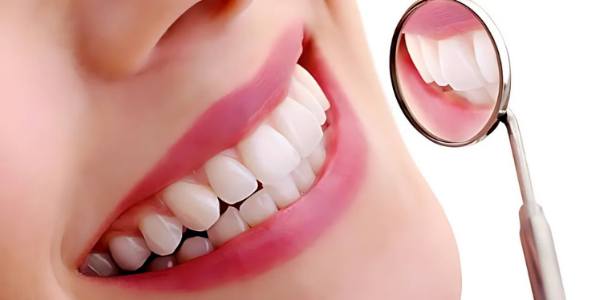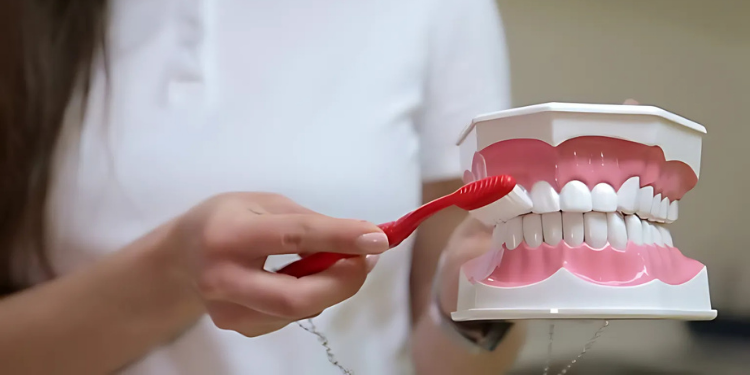
Oral health plays a vital role in overall health, but is often underestimated. While many people focus on physical fitness or skin care, the importance of dental hygiene is often overlooked. Poor oral hygiene not only affects the health of your teeth and gums; It can also affect your confidence, social interactions, and even your overall health. Let's take a deeper look at how you can take the best possible care of your teeth with practical tips recommended by dentists.
Timing Matters: When Should You Brush?
Brushing your teeth is the cornerstone of a proper dental care routine. It removes food particles, plaque, and bacteria, preventing tooth decay and gum disease. The American Dental Association (ADA) advises brushing at least twice daily, in the morning and before bed, for a minimum of two minutes each time. Yet, studies show that many people fail to brush correctly or for long enough.
Brushing immediately after eating, particularly acidic foods such as citrus fruits or tomatoes, can damage your teeth. Acids soften your enamel temporarily, and brushing too soon can wear it down. Dentists recommend waiting at least 30 minutes after meals to allow your saliva to neutralize the acids.
On the other hand, if you consume sugary or starchy foods, brushing your teeth or rinsing your mouth shortly afterward can help remove residue and bacteria. These foods create an ideal environment for plaque to form, which can lead to cavities if not addressed promptly.
Choose the Right Equipment
Your toothbrush plays a significant role in your oral care routine. Selecting the right toothbrush depends on personal preferences and dental needs.
-
Bristle Type: Soft bristled toothbrushes are ideal for most people, especially those with sensitive gums. Medium or hard bristles may be more effective for removing stains but can cause gum irritation if used improperly.
-
Handle Design: A comfortable grip is crucial, especially for those with limited dexterity. Opt for a handle that feels secure in your hand.
Electric vs. Manual Toothbrush
Electric toothbrushes are highly effective in removing plaque and can be particularly beneficial for individuals with braces or other dental work. They often come with timers and various modes for sensitive teeth or gum care. However, manual toothbrushes are also effective when used correctly. Choose the option that best fits your lifestyle and dental health needs.
Perfect Your Brushing Technique

Brushing isn’t just about moving a toothbrush across your teeth. Doing it the wrong way can cause harm rather than benefit. To maximize your efforts, follow these dentist approved techniques:
-
Use a soft bristled toothbrush, as hard bristles can damage gums and enamel over time. Replace your toothbrush every three to four months or sooner if the bristles become frayed.
-
Fluoride strengthens enamel, protects against cavities, and helps remineralize weakened areas on your teeth.
-
Avoid scrubbing back and forth or up and down. Instead, use gentle, circular motions to clean each tooth and the gumline effectively.
-
Pay attention to the molars at the back of your mouth, where plaque tends to accumulate.
-
Bacteria can build up on your tongue, contributing to bad breath. Use your toothbrush or a tongue scraper to clean it daily.
Additional Tips for Optimal Oral Health
Maintaining optimal oral health requires more than just brushing your teeth. Incorporating additional habits into your daily routine ensures comprehensive protection against common dental problems. Below are detailed explanations of essential practices to enhance your oral hygiene.
Use Fluoride Toothpaste (Recommended by the American Dental Association (ADA)
Fluoride is a mineral that plays a key role in protecting and strengthening your teeth. (Recommended by the American Dental Association (ADA) It works by remineralizing weakened enamel, making it more resistant to acid attacks from bacteria in plaque. Regular use of fluoride toothpaste helps to prevent cavities, even in areas where decay has begun to form.
Floss Daily
Brushing cleans the surface of your teeth, but it cannot reach the tight spaces between them. This is where flossing comes in it removes food particles, plaque, and bacteria trapped between your teeth and along the gumline, areas most vulnerable to decay and gum disease.
Flossing Tips
-
Use about 18 inches of dental floss and wind most of it around your fingers, leaving a small section for flossing.
-
Gently slide the floss between your teeth, curving it into a “C” shape around each tooth.
-
Avoid snapping the floss to prevent gum irritation.
-
Consider alternatives like floss picks, water flossers, or interdental brushes if traditional floss is difficult to use.
Daily flossing can significantly reduce your risk of cavities and gum disease while promoting healthier gums and fresher breath.
Rinse with Mouthwash
Mouthwash is a valuable addition to your oral care routine, offering benefits that brushing and flossing alone may not provide. It can kill bacteria, freshen your breath, and help prevent gum disease and plaque buildup.
-
Reduces bacteria that cause bad breath and gum disease. Ideal for those with gingivitis or periodontal concerns.
-
Strengthens enamel and helps prevent cavities, particularly beneficial for those at higher risk of decay.
-
Gentler on sensitive gums and less likely to cause dryness.
Rinse with mouthwash after brushing and flossing to enhance the effects of your routine. For best results, follow the instructions on the label and avoid eating or drinking for 30 minutes after use.
Maintain a Balanced Diet

Your diet has a direct impact on your oral health. Consuming excessive amounts of sugar and acidic foods can weaken enamel and fuel the growth of harmful bacteria in your mouth. On the other hand, a balanced diet rich in vitamins and minerals supports strong teeth and gums.
Foods to Limit
-
Candies, sodas, and baked goods can lead to plaque buildup and cavities.
-
Citrus fruits, coffee, and sports drinks can erode enamel over time.
Foods to Include
-
Milk, cheese, and yogurt provide calcium and phosphates that strengthen teeth.
-
Spinach and kale are packed with vitamins that promote healthy gums.
-
Apples, carrots, and celery naturally clean your teeth and stimulate saliva production, which neutralizes acids.
-
Almonds and sesame seeds are excellent sources of calcium and other nutrients.
Staying hydrated is equally important. Drinking plenty of water helps rinse away food particles and bacteria, maintaining a clean and moist oral environment.
A healthy, beautiful smile is achievable with consistent effort and proper oral care. By brushing and flossing daily, choosing the right dental tools, and maintaining a balanced diet, you can protect your teeth and gums for years.
With Smile Center, start building healthy habits today, and enjoy the benefits of a confident, radiant smile!
REFERENCES:
-
Blum IR. Primary dental care: an update for general dental practice. Prim Dent J. 2023 Mar;12(1):2.
-
Bradley N, Doshi M. Inpatient dental care. Br Dent J. 2021 Mar;230(6):325-326.


